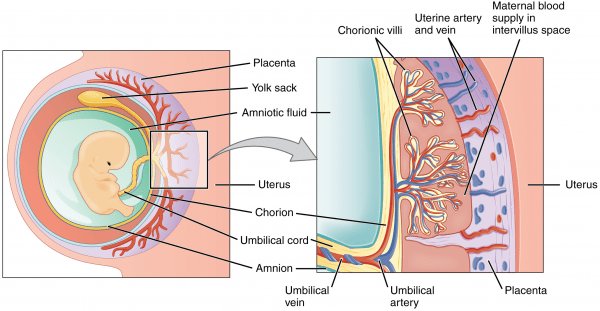The placenta and umbilical cord are essential organs of pregnancy. The placenta is the site of exchange of gas, nutrient, and waste exchange between the fetus and mother, and the umbilical cord is a tube that contains vessels and connects the fetus to the placenta.
Placenta
The placenta is a temporary feto-maternal organ providing the interchange between mother and fetus. It is a circular discoidal organ, which at term measures about 22cm with an average weight of 500gr.

Divisions
The placenta is divided into 2 surfaces: the fetal and the maternal surfaces.
- The fetal surface, which is represented by the chorionic plate, is covered by the amnion and provides the attachment site to the umbilical cord.
- Representing the maternal surface of the placenta, the basal plate emerges from the uterine wall during delivery.
Structures
The placenta is composed of a series of placental cotyledons, each one having different villous and vessel branches (villous trees), described as follows:
- Stem villi. Connected to the chorionic plate, these are characterized
